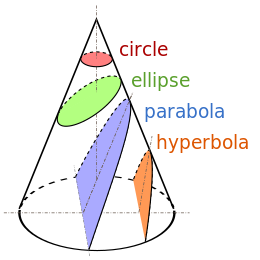Törölt nick
 2024.04.15 2024.04.15
|
|
-1 0
13154
|
Kicsit pontosabban:
A kör és az ellipszis még kötött pálya.
Határeset a parabola, mert a végtelenbe 0 energiával érkezik.
Hiperbola pálya esetén az energiája a végtelenben is pozitív.
Kiszökhet az univerzumból?
In astrodynamics or celestial mechanics, a hyperbolic trajectory or hyperbolic orbit is the trajectory of any object around a central body with more than enough speed to escape the central object's gravitational pull. The name derives from the fact that according to Newtonian theory such an orbit has the shape of a hyperbola. In more technical terms this can be expressed by the condition that the orbital eccentricity is greater than one.
Under simplistic assumptions a body traveling along this trajectory will coast towards infinity, settling to a final excess velocity relative to the central body. Similarly to parabolic trajectories, all hyperbolic trajectories are also escape trajectories. The specific energy of a hyperbolic trajectory orbit is positive.
In astrodynamics or celestial mechanics a parabolic trajectory is a Kepler orbit with the eccentricity equal to 1 and is an unbound orbit that is exactly on the border between elliptical and hyperbolic. When moving away from the source it is called an escape orbit, otherwise a capture orbit. It is also sometimes referred to as a C3 = 0 orbit (see Characteristic energy).
Under standard assumptions a body traveling along an escape orbit will coast along a parabolic trajectory to infinity, with velocity relative to the central body tending to zero, and therefore will never return. Parabolic trajectories are minimum-energy escape trajectories, separating positive-energy hyperbolic trajectories from negative-energy elliptic orbits.



|
Előzmény: mmormota (13153)
|
|